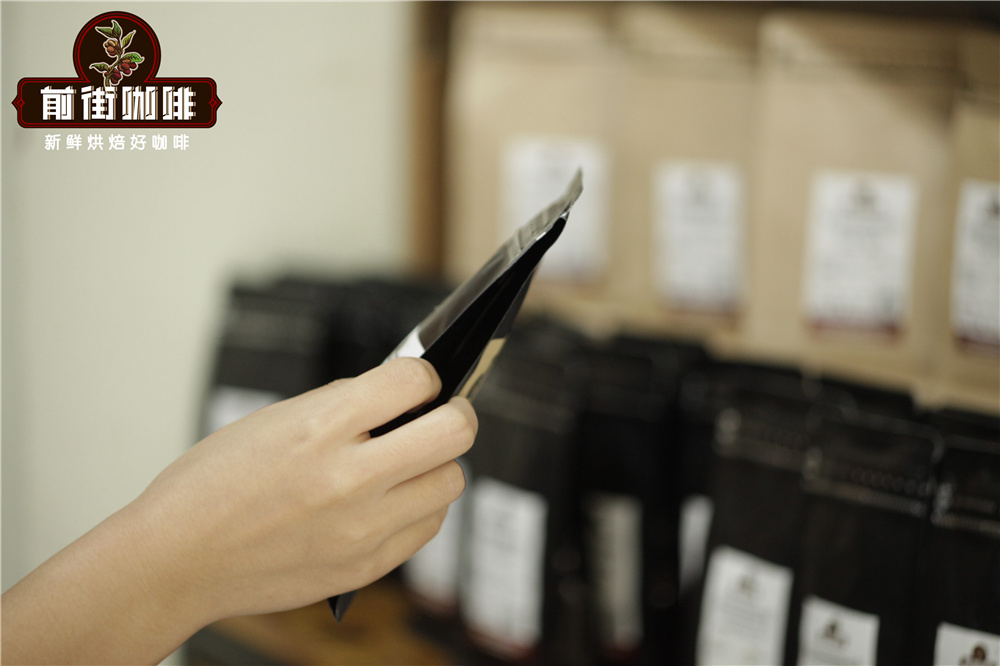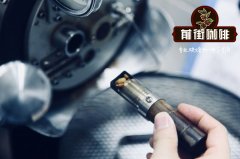Coffee Roasting Principles: Heat Conduction, Convection and Radiation Coffee Roaster Training Points

Professional coffee knowledge exchange more coffee bean information please follow the coffee workshop (Wechat official account cafe_style)
A complete collection of coffee roasting techniques | the purpose of coffee roasting and the characteristics of coffee beans
Coffee roasting will face a variety of problems, only familiar with the principle of coffee roasting, continue to accumulate experience, coupled with improvisation, baristas can master superb skills.
To do a good job in baking, every production link can not be ignored, the selection of materials should be fastidious, the weighing of materials should be accurate, and the operation should be careful. Baking is a science. To understand the principle of baking, we must first understand the three ways of heat conduction, convection and radiation.
Conduction refers to when the heat is transmitted by the heat source, causing the surrounding molecules to vibrate and release heat, gradually moving from the high temperature to the low temperature. The conduction of stainless steel has the phenomenon of uneven heating, which can easily lead to colder and hotter parts of the pot.
Convection means that when the material is heated, the fluid material or gas rises due to the volume expansion and the decrease of density due to the heating action, and its position is supplemented by the colder and denser fluid exchange around it, and then rises by heating, and the surrounding material is added. Such a continuous cycle of heating motion is called convection.
Radiation does not need any medium, and the heat can be radiated directly to the object to heat it. The most common form of radiation used in food is the use of dielectrics, microwaves or infrared rays. In the specific operation of baking, it is often baked in two or three ways at the same time, depending on the environmental conditions at that time.
The problems commonly encountered in coffee roasting are as follows:
First, when the preheating temperature of the baking room is insufficient, the coffee beans are immediately put into the oven, which prolongs the baking time. Therefore, the baking loss is large, and the color of coffee beans is light, which is due to the lack of heat and the lack of full coking of the skin, resulting in a lack of color and rough internal tissue.
Second, the temperature of the oven in the baking room is too high, and the hard crust is formed prematurely on the surface of the coffee, which suppresses the expansion of the internal tissue, and because of its fast surface coloring, the operator mistakenly thinks that the product has been baked and ends the baking ahead of time. The inside of this kind of bean is sticky and dense, it doesn't expand as it should, and it doesn't have a normal flavor.
Third, the gap is too long after preheating. The internal furnace that has been empty for too long accumulates too much heat, and as soon as the coffee beans enter the oven, all the heat sources will concentrate on the surface of the beans at the initial stage of the baking process, forming too strong heat, then the heat disappears and cools rapidly, and the unstable temperature in the furnace causes uneven heating inside and outside the coffee beans.
Fourth, the baking time is too much or not enough. The baking temperature and time should be adjusted according to the number of beans. A small number of baking rooms have more space, and the metal conducts more heat radiation, so the temperature is lower, while when the number is larger, the temperature can be higher. The baking time also needs to be adjusted flexibly. The heating of beans in the oven is nothing more than the absorption of heat from the appearance and surrounding to the center of the beans, so the baking can be observed from the changes in the appearance of the beans.
Fifth, did not develop a good habit of recording, baking by feeling, resulting in insufficient stability, can not form their own sufficient baking curve database, as a reference for future baking.
In addition, the type and performance of the roaster will also cause the difference of baking time and temperature. From the direct fire type or gas type up and down fire mode in the past to the electric heating type commonly used now, the convection design of energy has been continuously improved. At the same time, the installation of fans can improve the stability of thermal convection, make the color of baked beans more uniform, and save electricity and baking time.
Advanced tools and equipment make the baking process easier to operate, and it is equally important for operators to accumulate baking experience.
In short, coffee roasting will face a variety of problems, only familiar with the principle of coffee roasting, continue to accumulate experience, coupled with improvisation, baristas can master superb skills.
Roasting of coffee
Through the burning of the fire, release the aroma of coffee, release the sour, sweet and bitter taste of ─ contained in each bean incisively and vividly, from the insipid raw bean to the endless aftertaste of mellow ─ roasting, is the most important stop to outline the character and nurture fragrance in the long journey of every coffee bean.
Whether in a professional roaster, on your own fire or in an oven, coffee beans last about 12-16 minutes and the temperature is as high as 240 degrees Celsius, but in the process of this hot conversation, coffee beans have to go through many chemical changes to make a second popcorn-like crisp sound and lose 10% of the water of 20% of the color.
Baking process, like popcorn full of fragrance and joyful bouncing sound. From raw beans, light roasting to deep roasting, the water is released again and again, the weight is reduced, but the volume slowly expands and bulges, the color of coffee beans deepens, the fragrant oil is gradually released, and the texture becomes crisp. Raw beans ─ each coffee cherry contains two raw beans, and the fragrance is still deep in it, waiting to be discovered. Raw beans contain a lot of chloric acid, which disappears with the baking process, releasing familiar and pleasant fruit acids such as acetic acid, citric acid, and malic acid found in wine. Baking is just right to present these beautiful sour tastes in moderation, while if you bake them too much, they will be completely masked. When baked for 5-7 minutes, the beans begin to release water, changing from light green to orange, emitting the unique aroma of creamy roasted vegetables.
Light baked ─ when the beans make the first light sound, the volume expands at the same time, and the color changes to a delicious cinnamon color, so it is also called CINNAMON RAOST or HALF-CITY ROAST. Acidity dominates the flavor of shallow roasted beans, texture and taste have not been brought into full play, so they are generally used as canned coffee, can not meet the real coffee experts.
Medium roasted coffee beans are elegantly brown. New Yorkers like to start each day by roasting coffee beans with fragrant milk and sugar at breakfast, so this method of baking is also called BREAKFAST ROAST or CITY ROAST. Medium roasting can not only preserve the original flavor of coffee beans, but also moderately release aroma, so Blue Mountains, Colombia, Brazil … Wait for a single cup of coffee, choose this kind of baking method. When roasting deeper, the oil begins to surface, and the beans are burned to a bright dark brown, called FULL-CITY ROAST. Some people think that the sour, sweet and bitter taste of coffee reaches the perfect balance, and the character of coffee beans is clearly carved out.
The darker the color of deep-roasted ─ coffee beans, the sweeter the flavor, when the oil has been turned into caramel, bitter, endless aftertaste, the most suitable for brewing strong ESPRESSO coffee, so it is also called Italian roasting. Moderate roasting gives life to the coffee beans and turns into an intriguing sour, sweet, bitter and astringent taste. However, people who are sensitive to caffeine might as well choose deep-roasted beans as much as possible, because caffeine will slowly escape during baking, so the deeper the roasted beans, the lower the caffeine content.
Note: the sour and bitter taste of roasting degree will still vary from coffee to coffee, and the main drinking method varies from person to person.
Reference table of baking degree:


Basic and advanced sharing of coffee roasting experience and knowledge
Important Notice :
前街咖啡 FrontStreet Coffee has moved to new addredd:
FrontStreet Coffee Address: 315,Donghua East Road,GuangZhou
Tel:020 38364473
- Prev

How to judge the roasting degree of coffee and compare the taste roasting characteristics of Italian coffee and American coffee beans
Professional coffee knowledge exchange more coffee bean information please follow the coffee workshop (Wechat official account cafe_style) Coffee roasting skills Daquan | the purpose of coffee roasting and the characteristics of coffee beans mainly affect the taste and flavor of coffee there are two major factors: first, raw bean characteristics second, coffee bean roasting degree bean roasting
- Next

Coffee bean roasting skills sharing coffee roasting degree which is good coffee bean roasting degree is different?
Professional coffee knowledge exchange more coffee bean information please follow the coffee workshop (Wechat official account cafe_style) Coffee roasting skills Collection | the purpose of coffee roasting and the characteristics of coffee beans good roasting can enhance the characteristics of coffee beans local conditions and taste, the degree of roasting is not as good as too bitter or not ripe, will make the coffee stale. A boiler with rich baking experience
Related
- Beginners will see the "Coffee pull flower" guide!
- What is the difference between ice blog purified milk and ordinary milk coffee?
- Why is the Philippines the largest producer of crops in Liberia?
- For coffee extraction, should the fine powder be retained?
- How does extracted espresso fill pressed powder? How much strength does it take to press the powder?
- How to make jasmine cold extract coffee? Is the jasmine + latte good?
- Will this little toy really make the coffee taste better? How does Lily Drip affect coffee extraction?
- Will the action of slapping the filter cup also affect coffee extraction?
- What's the difference between powder-to-water ratio and powder-to-liquid ratio?
- What is the Ethiopian local species? What does it have to do with Heirloom native species?

